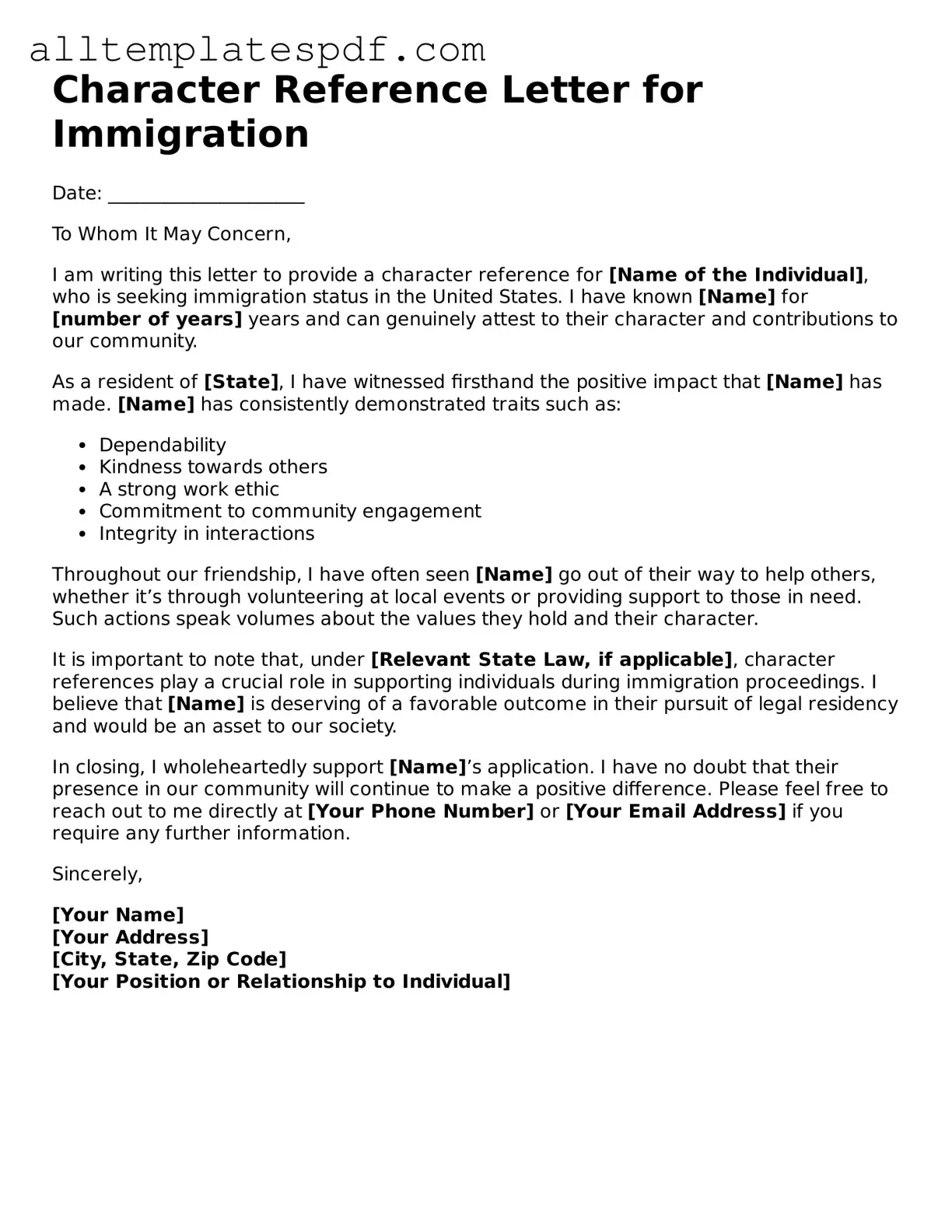Filling out a Character Reference Letter for Immigration can be a crucial step in supporting an immigration application. However, many individuals make common mistakes that can undermine the letter's effectiveness. Understanding these pitfalls can help ensure that the letter serves its intended purpose.
One frequent mistake is failing to provide specific examples of the individual's character. General statements about being a "good person" or "hard worker" lack the impact needed to persuade immigration officials. Instead, the letter should include specific anecdotes that illustrate the person's qualities, such as instances of community service or acts of kindness.
Another common error is neglecting to include the writer's relationship to the applicant. Immigration officials need to understand the context of the reference. A letter from a family member may carry different weight than one from a colleague or community leader. Clearly stating the nature of the relationship helps establish credibility.
Many people also overlook the importance of correct formatting and structure. A well-organized letter is easier to read and more professional. It should include a clear introduction, body, and conclusion. Additionally, using proper grammar and spelling is essential; mistakes can detract from the letter's authority.
Some individuals make the mistake of using overly complex language. While it may seem impressive to use sophisticated vocabulary, clarity is key. The letter should be straightforward and easy to understand. Immigration officials appreciate sincerity and simplicity over elaborate phrasing.
Another misstep is not tailoring the letter to the specific immigration case. Each immigration application is unique, and the character reference should address relevant aspects of the case. A generic letter may not resonate with the reader or may fail to address critical points that could influence the decision.
Lastly, some people forget to include their contact information. Providing a phone number or email address allows immigration officials to reach out for further clarification if needed. Omitting this information can hinder the process and may leave the letter without the necessary follow-up support.
